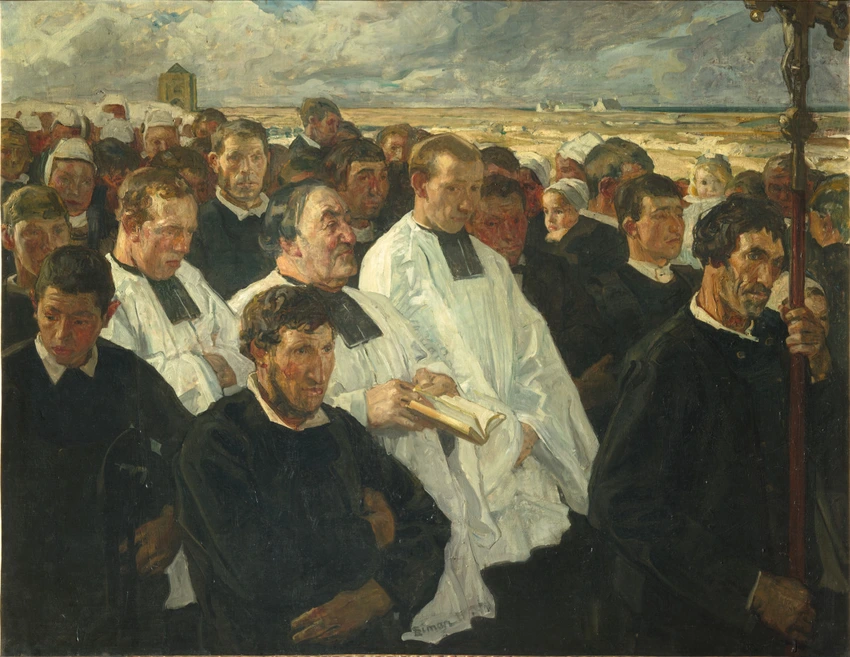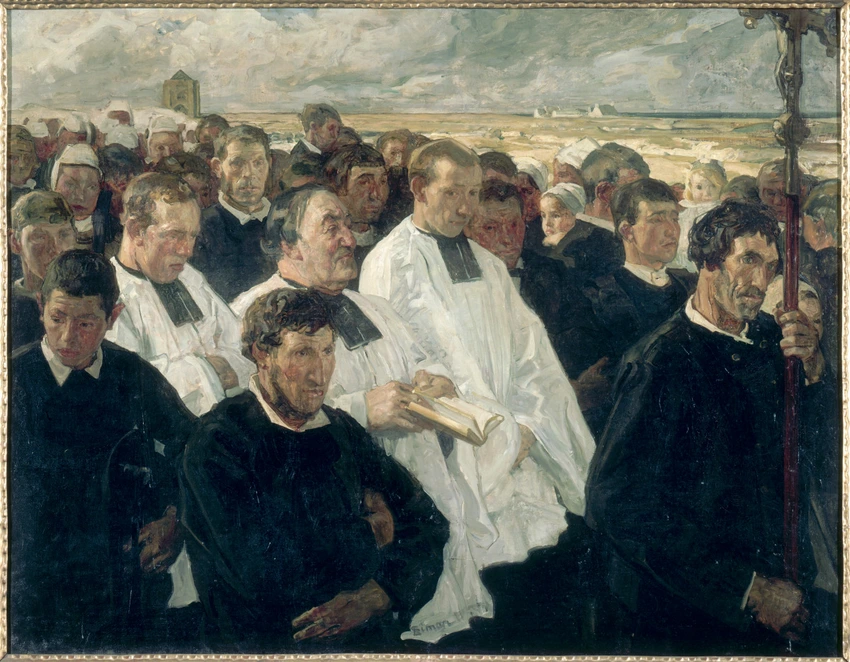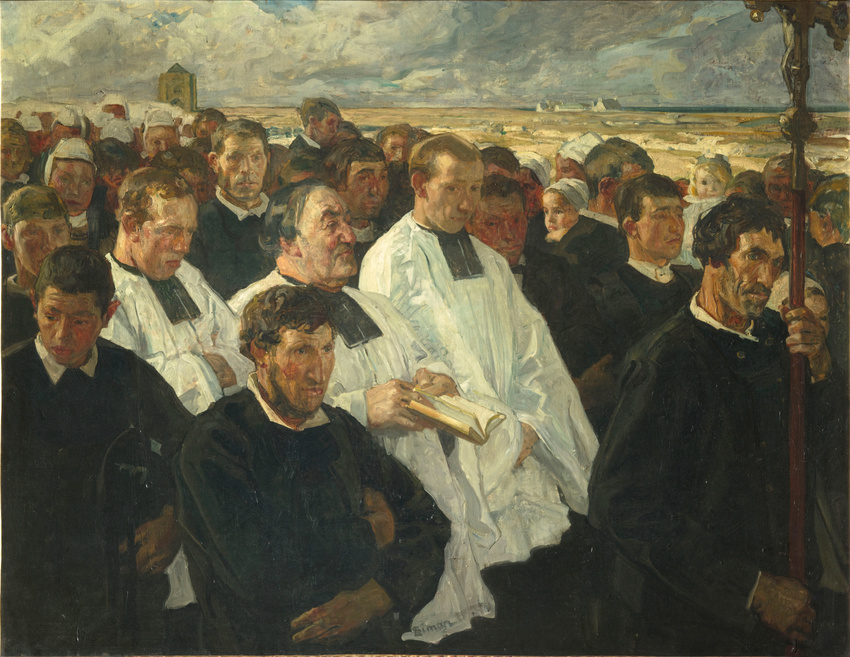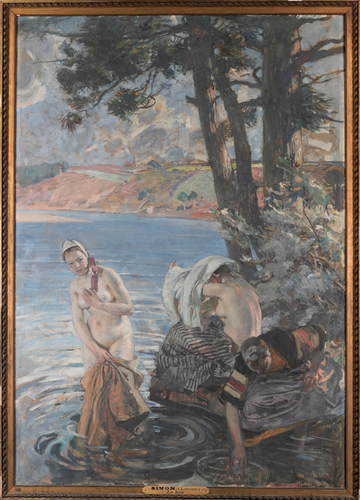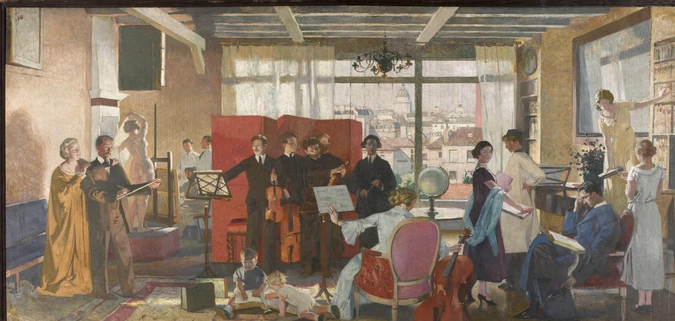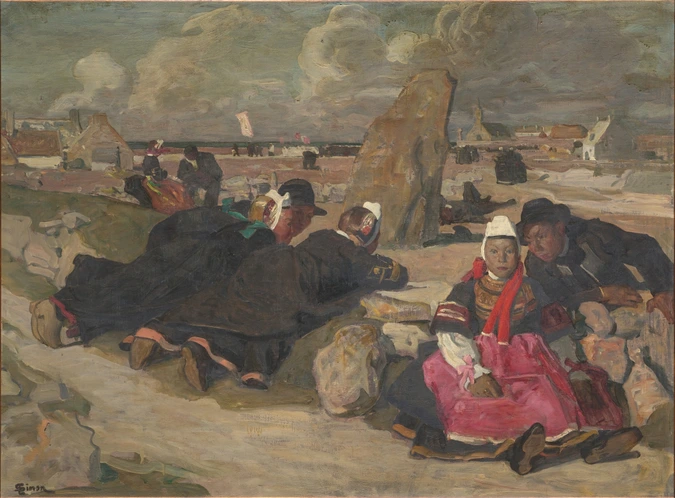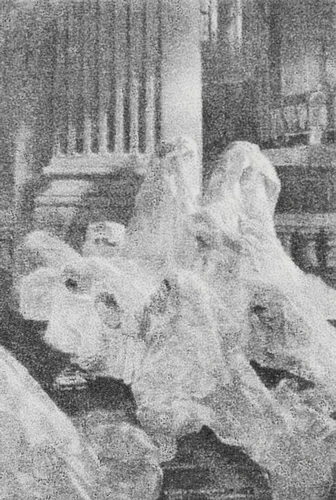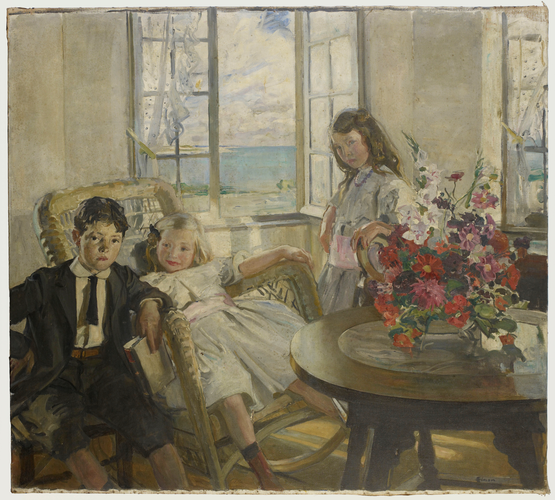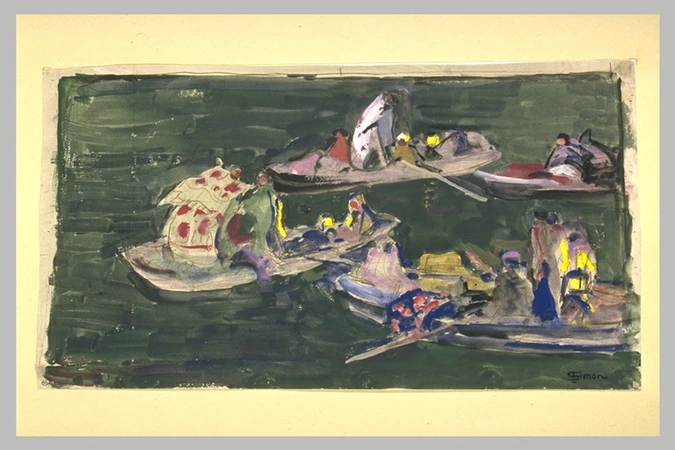Procession à Penmar'ch
Passionate and melancholic, Brittany became the region of choice for a group of artists nicknamed the "Bande Noire" (The Black Group). Charles Cottet and Lucien Simon in particular, moved by the extreme contrasts of this region, used dark tones to express the harsh life of the sailors and the faith that sustained them.
"Through his extraordinary insight, the artist clearly renders not only a distinctive portrait, but also the hidden feelings of each individual character, making The Procession one of the most magnificent works in our Modernist canon, [...]. The work goes far beyond a straightforward account of an event: it reveals the enduring religious feeling of a people with a long tradition of belief and respect for ancient laws and traditions; the devout figures of the women, the solemn sincerity of the fishermen, the majestic figure of the smiling, contented priest, [...], all affirm the unquestionable authority of the priesthood over the Breton people" (L. Genevray, Painters of Modern Life, 1912).
Although Lucien Simon's painting succeeded in making a great impression, indeed it was bought by the French State in 1901, it is without doubt the simplification of the masses and the strong treatment that give it its monumentality.
